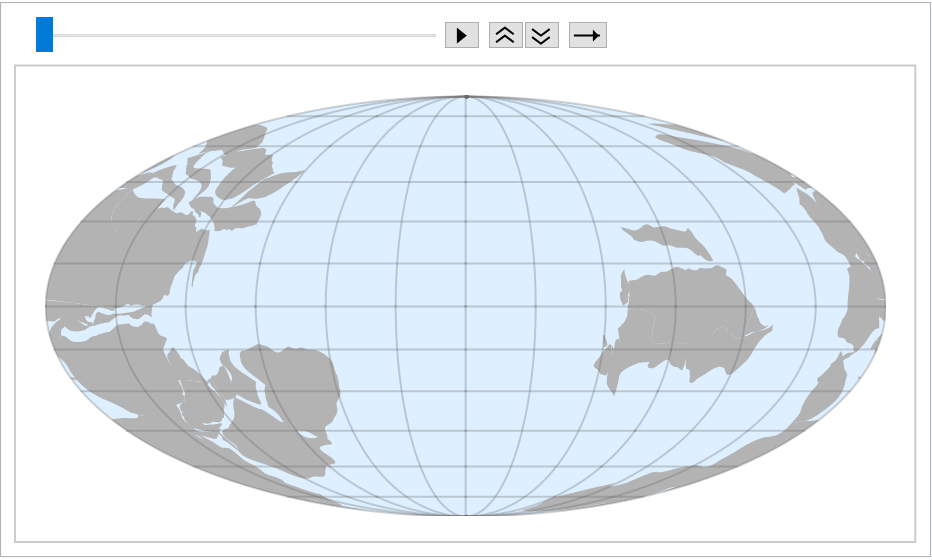Basic Examples (5)
The default plate configuration is for the Holocene epoch:
Query for available plate configurations during a specified geological period:
Some geological periods have more than one set of configurations available:
Request the continental plates of the geological period corresponding to a specified time in the past:
A single result may be returned if the provided value exactly matches one of the available time keys:
Scope (2)
The available dates for a given geological period can be requested:
Some geological periods have no available data:
ContinentalPlateMaps can be applied to any of the following geological periods:
Options (6)
ContinentStyle (1)
Continent colors can be specified using any valid graphics directive:
GeoBackground (1)
Set the background to white:
GeoCenter (1)
Change the center:
GeoGridLines (1)
Do not show the grid lines:
GeoProjection (1)
Use an orthographic projection:
Outlines (1)
Continental plate outlines are set to None by default but can be specified:
Applications (4)
Visualize the continental configuration when the supercontinent Rodinia existed:
Visualize the continental configuration when the supercontinent Pangaea existed:
Visualize the position of India as it was moving northward during the Cenozoic era:
The Appalachian Mountains began to form when volcanic island arcs collided with Laurentia (core of modern North America):
Properties and Relations (2)
Because the result of ContinentalPlateMaps is an Association, the value for any key‐value pair can be obtained by supplying the key of interest:
Request the continental plates for a specific date instance:
Possible Issues (2)
Not all geological periods have data available:
Geological time periods are organized hierarchically with eons being the longest span, then becoming shorter through eras, periods, and epochs. As a result, when requesting the continental plate configuration for a time quantity, the result corresponds to the shortest geological period that contains the specified quantity. Epochs are preferred over periods and longer time intervals:
This corresponds to the same result as for the Holocene epoch as opposed to the Quaternary period, the Cenozoic era or the Phanerozoic eon, all of which contain the 12,000-years-ago specification:
Neat Examples (2)
To create an animation, first get a list of geological time entities:
Because geological time periods are hierarchical and some are missing data in the most ancient cases, some cleaning, merging and sorting is needed to get a flat list of frames:



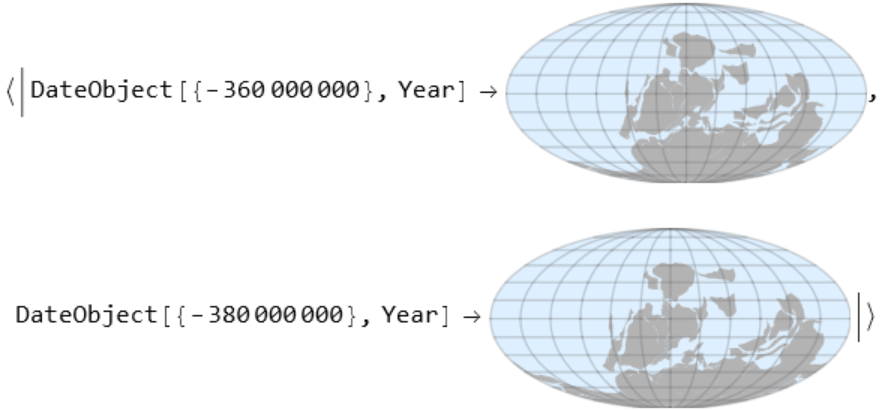
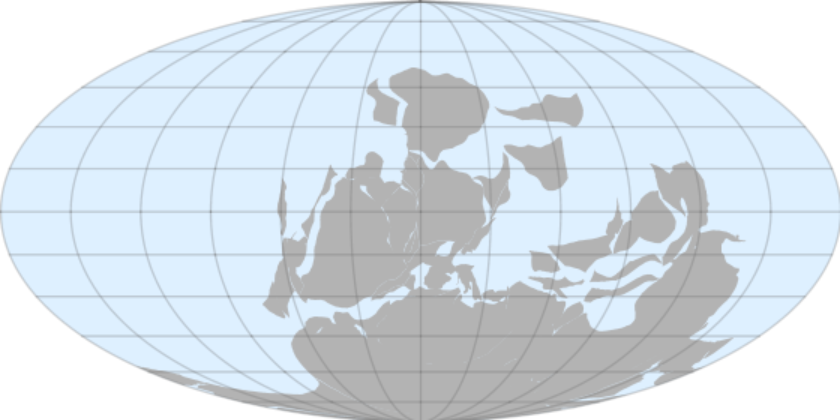
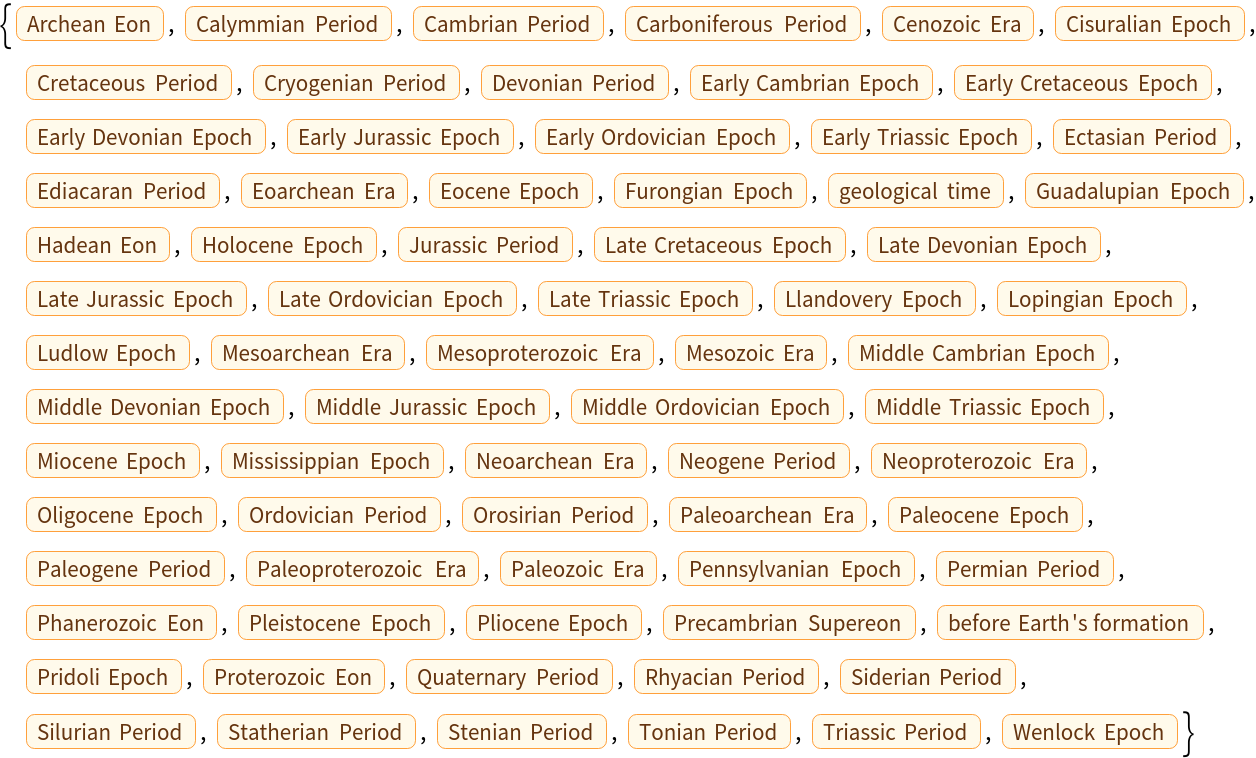
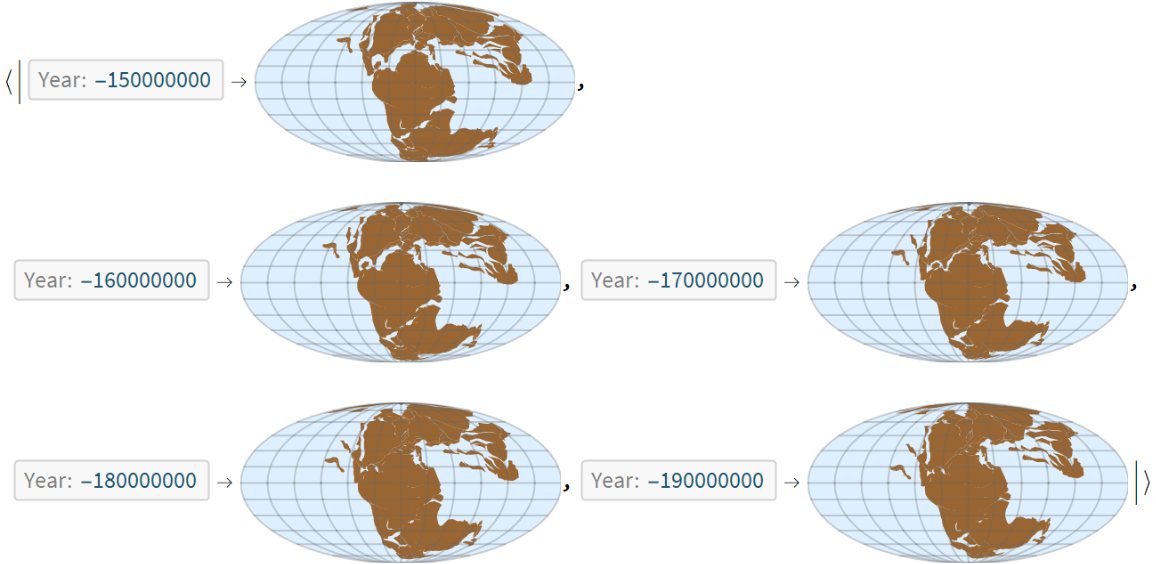





![ResourceFunction[
"ContinentalPlateMaps", ResourceSystemBase -> "https://www.wolframcloud.com/obj/resourcesystem/api/1.0"][Entity["GeologicalPeriod", "StenianPeriod"], GeoCenter -> {0, 180}][DateObject[{-1000000000}, "Year"]]](https://www.wolframcloud.com/obj/resourcesystem/images/f7a/f7a6733f-67cd-4590-a9c7-d41cbab51fe5/6597e5a901ec5b9b.png)
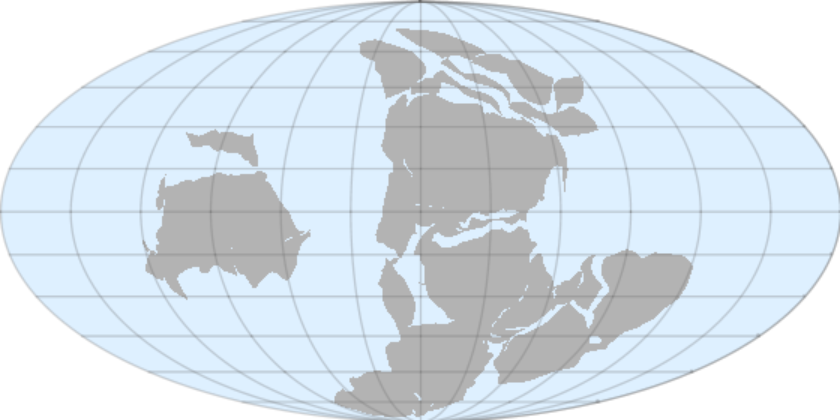
![ResourceFunction[
"ContinentalPlateMaps", ResourceSystemBase -> "https://www.wolframcloud.com/obj/resourcesystem/api/1.0"][
Entity["GeologicalPeriod", "TriassicPeriod"]][
DateObject[{-250000000}, "Year"]]](https://www.wolframcloud.com/obj/resourcesystem/images/f7a/f7a6733f-67cd-4590-a9c7-d41cbab51fe5/19b162edac4d8d6e.png)
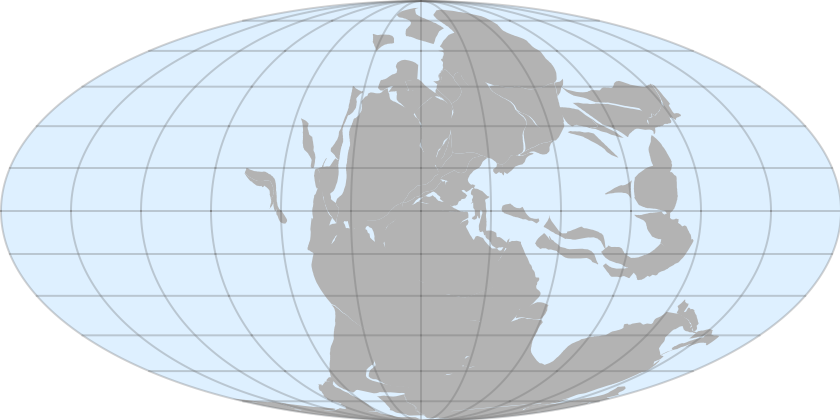
![Grid[Partition[
Reverse[Values[
Union@ResourceFunction[
"ContinentalPlateMaps", ResourceSystemBase -> "https://www.wolframcloud.com/obj/resourcesystem/api/1.0"][Entity["GeologicalPeriod", "CenozoicEra"], GeoCenter -> {0, 60}, GeoProjection -> "Orthographic"]]], 3]]](https://www.wolframcloud.com/obj/resourcesystem/images/f7a/f7a6733f-67cd-4590-a9c7-d41cbab51fe5/287a2d944c1c7a5c.png)
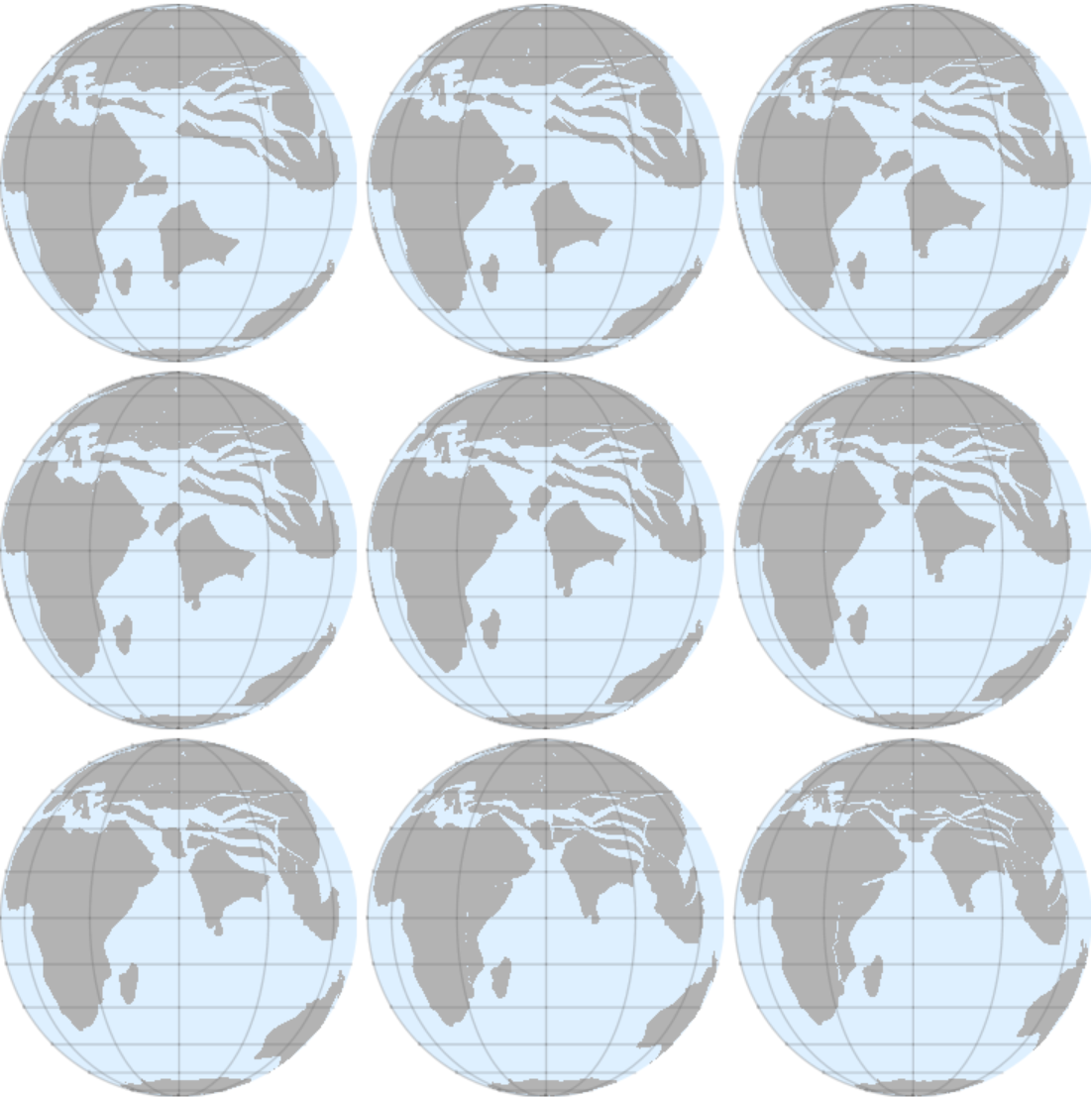
![Grid[{Reverse[
Values[ResourceFunction[
"ContinentalPlateMaps", ResourceSystemBase -> "https://www.wolframcloud.com/obj/resourcesystem/api/1.0"][Entity["GeologicalPeriod", "SilurianPeriod"],
GeoRange -> Quantity[3400, "Miles"], GeoCenter -> {-25, -60}]]]}]](https://www.wolframcloud.com/obj/resourcesystem/images/f7a/f7a6733f-67cd-4590-a9c7-d41cbab51fe5/408f41fdc893478a.png)

![ResourceFunction[
"ContinentalPlateMaps", ResourceSystemBase -> "https://www.wolframcloud.com/obj/resourcesystem/api/1.0"][Entity["GeologicalPeriod", "PermianPeriod"]][
DateObject[{-260000000}, "Year"]]](https://www.wolframcloud.com/obj/resourcesystem/images/f7a/f7a6733f-67cd-4590-a9c7-d41cbab51fe5/3d349ec515f6b160.png)

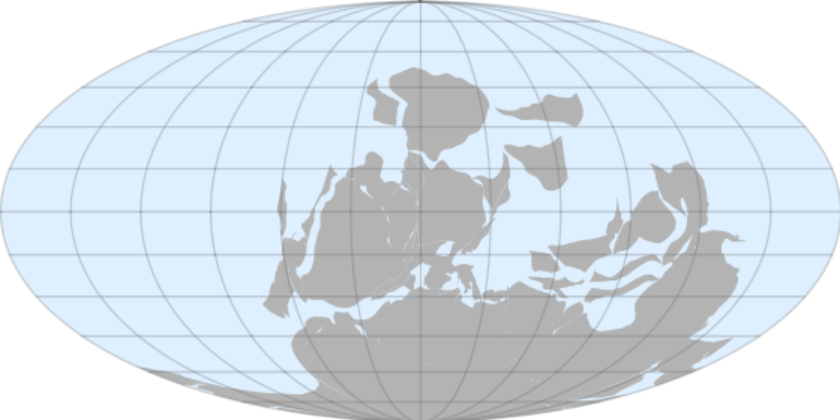



![plots = Flatten[
Values[KeySort[
Union /@ Merge[DeleteMissing[
ResourceFunction[
"ContinentalPlateMaps", ResourceSystemBase -> "https://www.wolframcloud.com/obj/resourcesystem/api/1.0"] /@ periods], Identity]]]];](https://www.wolframcloud.com/obj/resourcesystem/images/f7a/f7a6733f-67cd-4590-a9c7-d41cbab51fe5/3d3067553e35f47d.png)
